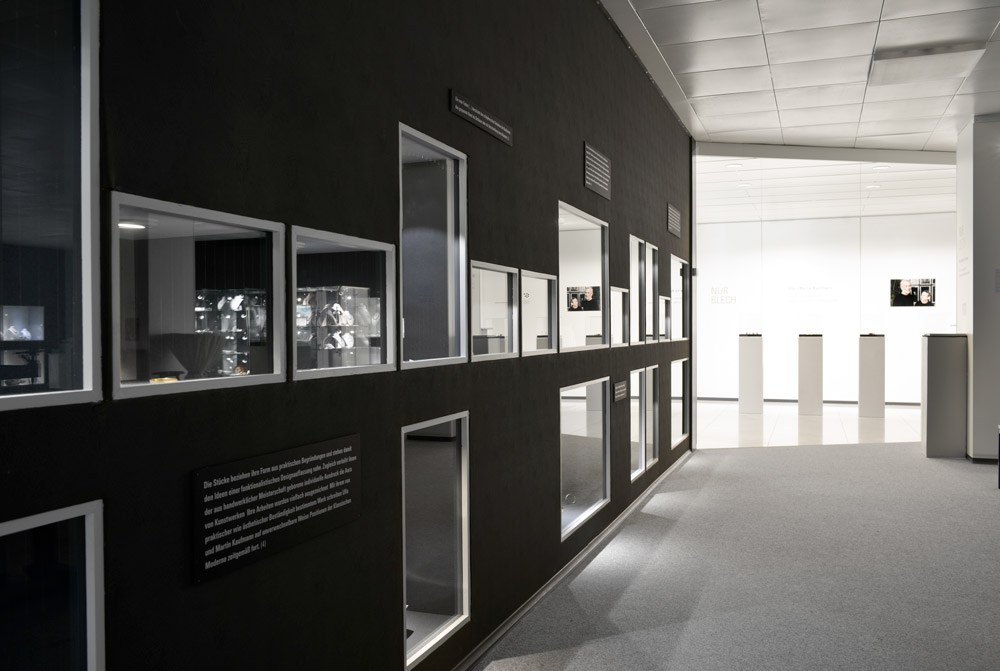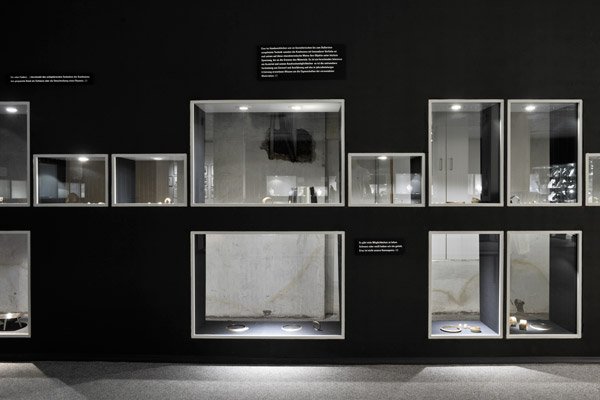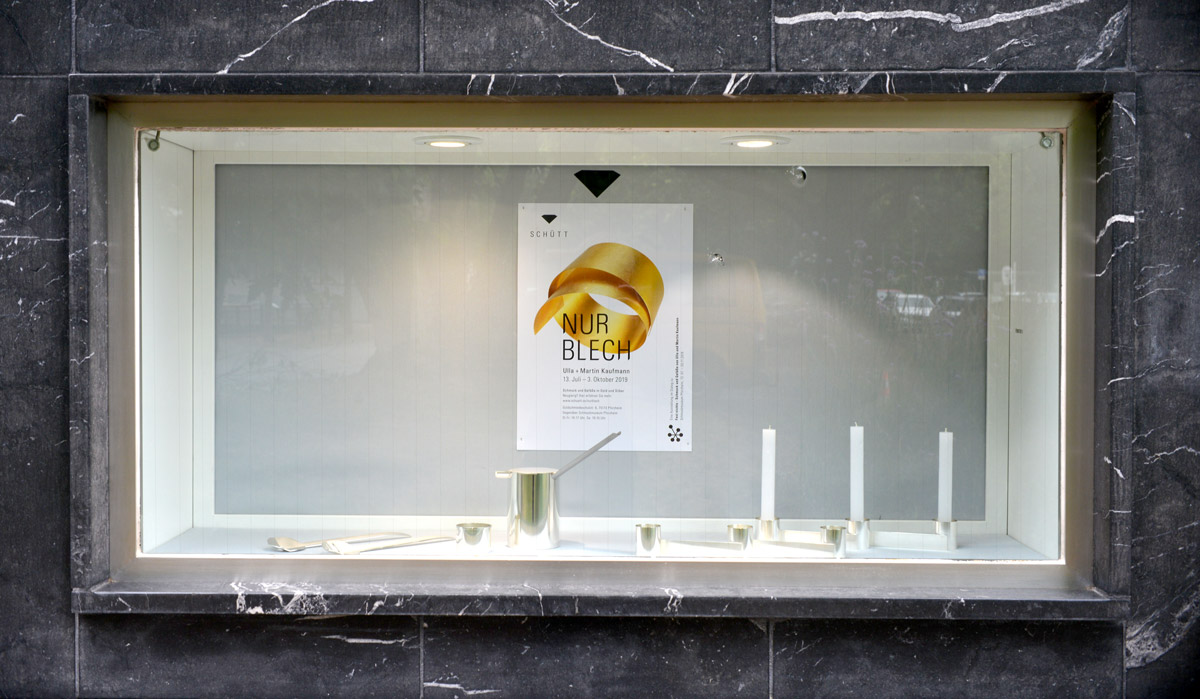
nur blech — Ulla + martin kaufmann
Special Exhibition
july 13 — october 3, 2019
On the occassion of the exhibition Fast nichts – Schmuck und Gefäße von Ulla und Martin Kaufmann, that is on display at Schmuckmuseum Pforzheim from July 13 to November 3, 2019, SCHÜTT is showing an exhibition in dialogue. NUR BLECH highlights the wide spectre of jewellery and vessels of an extraordinary work and life community. For almost have a century Ulla + Martin Kaufmann have profoundly influenced the history of silversmith's art. Reduced, direct and authentic.
Opening hours of the exhibition
Tuesday – Friday: 10am – 5pm
Saturday: 10am – 3pm
The displayed exhibits are for sale.
For further information please visit:
www.schmuckmuseum.de
www.ulla-martin-kaufmann.de
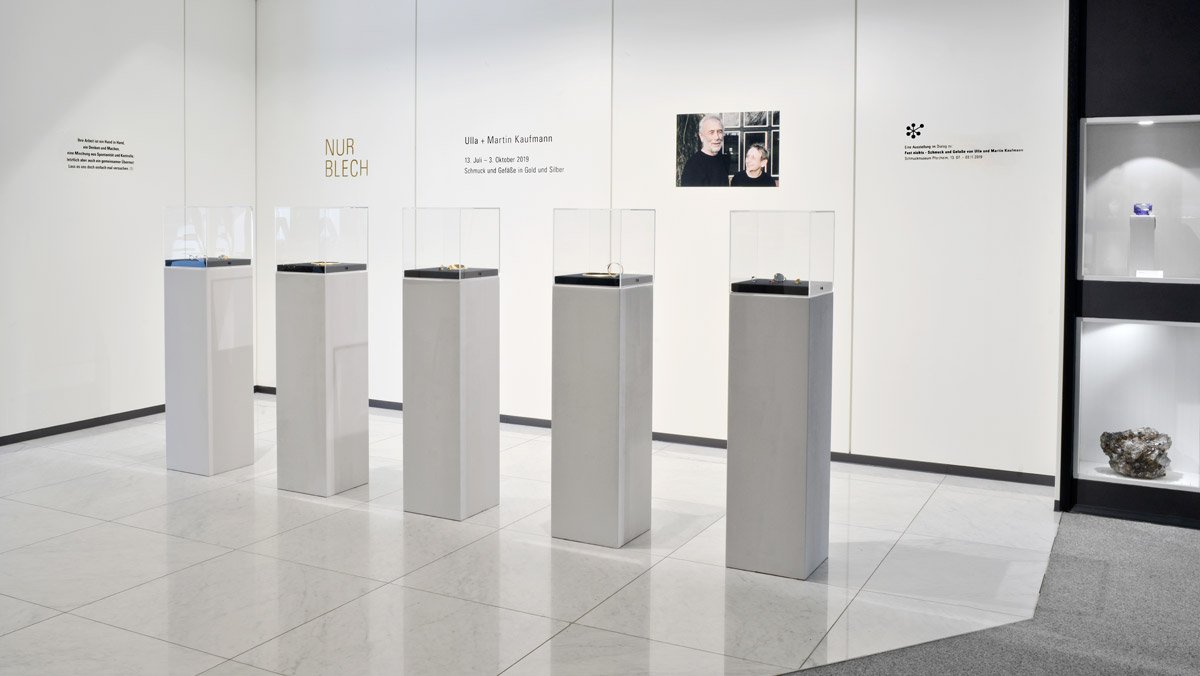
Insigths
It’s not uncommon for a married couple to share an atelier, but it’s rare indeed for a couple to prioritize absolute collaboration. Each spouse is seldom encountered alone: they think, work and exhibit their creations together. Perhaps Martin Kaufmann is the more enthusiastic of the two, the one who approaches others and responds to stimuli more quickly. Ulla Kaufmann, on the other hand, is the more thoughtful partner, the one who must first work meticulously with an idea before she forms an opinion about it. If she’s sure that a particular shape can somehow be translated into three-dimensional reality, then it’s more often Martin who forges ahead and simply gives it a try. Their work moves from one pair of hands to the other, from thinking to making. It’s a mixture of spontaneity and control, and it’s ultimately also a mutual audaciousness, with an attitude that might be described as “let’s just go ahead and attempt it.”
Ulla and Martin Kaufmann were born on almost exactly the same day. They understand each other wordlessly.

When they’re not at work in their atelier, Ulla and Martin Kaufmann can probably be found somewhere in Germany or elsewhere in Europe: perhaps at the Crafts Fair in Munich or the Museum of Arts and Crafts in Hamburg; perhaps in the Provence, where they’ve been renovating an old country house since the early 1990s; perhaps in galleries in Barcelona or Antwerp, where they exhibit their work; or perhaps at “Collect” at the V & A in London. They travel a lot and they see even more. They don’t belong to any group or artistic school. And they keep themselves oriented in the design world by visiting galleries and museums.
They enjoy the cheeky humor of the Dutch and they appreciate the Catalonians. Their point of departure is not the classical vessel. They want to see things differently than things have ever been conceived before.
When they say “we have our own standards,” they mean it’s good to free oneself from traditional modes of thought.
Cannot particular functions also be presented differently?
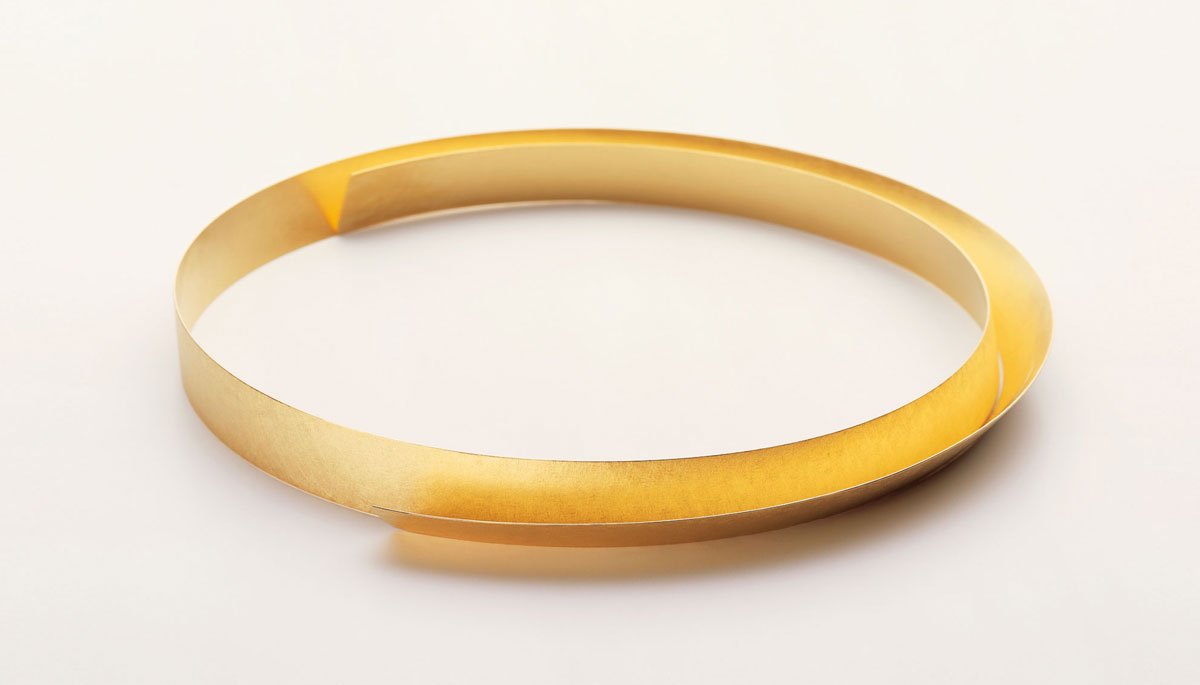
As silversmiths, the Kaufmanns can look back on a long evolutionary development. Jewelry was the focal point of their earliest works, although they also created cups and canisters alongside. They made “romantic” floral shapes with graphically expressive stars. A distinct stylistic change coincided with their first participation in the annual fair at the Museum of Arts and Crafts and with an industrial developmental commission. “We’re open for whatever comes our way.” Ulla and Martin Kaufmann numbered among those who arrived at the fair each year with new models and who really took the fair seriously. Here was a platform where they could exhibit their most daring forms, where their work was appreciated and knowledgeably discussed. It soon became a pleasurable duty for the fair’s visitors to keep their eyes peeled for the Kaufmanns’ latest designs. And the Kaufmanns ranked among the few who sought and cultivated contacts with development departments in the silver-goods industry.
No one has derived more fun and joy from making forays into experimentation than have the Kaufmanns themselves. They’re admired nowadays and are surprised to find themselves at the forefront of a new movement in the silversmith’s art. Several years ago they donated a significant sum and commissioned the Society for the Goldsmith’s Art to sponsor a competition for young talent. They had endured the lean years, when silver was thought to be “out” – too impractical, too costly, too elitist. But silver tableware has made a comeback, partly thanks to the Kaufmanns’ perseverance. And now they’re passing their example onward to the next generation.
Commenting on their own creations, Ulla and Martin Kaufmann say, “We develop the forms from our own lives. We derive them from our joys and sorrows.” The art of the silversmith cannot be communicated with greater authenticity.
— Dr. Rüdiger Joppien
